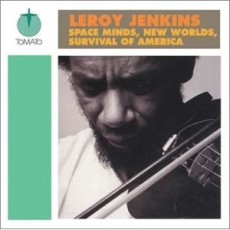
Daily Dose Of Jazz…
Leroy Jenkins was born on March 11, 1932 in Chicago, Illinois and began playing violin at eight years old, often in church. Another graduate of DuSable High under the tutelage of Walter Dyett, Leroy also played alto saxophone. He went on to graduate from Florida A&M, where he dropped the alto to concentrate on violin.
He returned to Chicago and divided his time from 1965 to 1969 between being involved in the Association for the Advancement of Creative Musicians (AACM) and teaching in the public school system. By the end of the decade he gave up Chicago for Europe and while in Paris, along with Anthony Braxton, Leo Smith and Steve McCall, he founded the creative Construction Company. Jenkins followed this with the Revolutionary Ensemble and formed a trio with Anthony Davis and Andrew Cyrille.
During 1987 he toured Europe as part of Cecil Taylor’s group. He gained recognition for music-theatre works such as “The Mother of Three Sons” and “The Negros Burial Ground”, two collaborations with Ann T. Greene, also “Fresh Faust”, and “The Three Willies”.
Leroy has played with Archie Shepp, Alice Coltrane and Rahsaan Roland Kirk; was a driving force in the free jazz circles and has written numerous pieces for soloists, small groups and large ensembles. Leroy Jenkins, composer, violist and free jazz violinist passed away February 24, 2007.
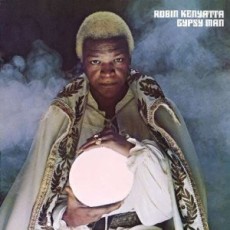
Daily Dose Of Jazz…
Robin Kenyatta was born Robert Prince Haynes on March 6, 1942 in Moncks Corner, South Carolina but grew up in New York City, learning to play the alto saxophone. He played with Bill Dixon in the 1960s and playing with his project “The October Revolution in Jazz”. Later that decade he played with Jazz Composer’s Orchestra, Roswell Rudd, Sonny Stitt, Archie Shepp and Buddy Miles among others.
By the 1970s he was playing with Alan Silva and Andrew Hill; for a brief time he experimented with instrumental pop music during this decade as well. He moved to Europe during the Seventies, finding it easier to make a living as a jazz musician.
Later in his career he would play with musicians such as Dizzy Gillespie, B. B. King, Dr. John and George Benson; played the Montreux Jazz Festival and went with his own groups on a European tour.
Kenyatta would go on to lead a jazz school in Lausanne, Switzerland during this period. In 2002 Kenyatta returned to the USA becoming active as a director of music in Boston. He died on October 28, 2004 at the age of 62 in Lausanne, leaving behind a catalogue of thirteen albums as a leader and eight as a sideman.
More Posts: saxophone
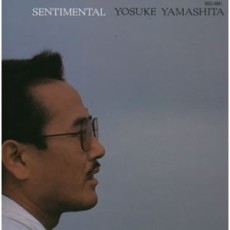
Daily Dose Of Jazz…
Yōsuke Yamashita was born February 26, 1942 in Tokyo, Japan. He first began to play piano professionally at the age of 17 in 1959 and attended the Kunitachi College of Music from 1962 to 1967. It was during his college matriculation that he released his first recording in 1963, becoming a pioneer of avant-garde and free jazz.
In 1969, Yosuke formed the Yosuke Yamashita Trio, which has been through various incarnations, each introducing and highlighting the skill of the new member. In the 1980s, Yosuke formed the “New York Trio” with bassist Cecil McBee and drummer Pheeroan akLaff.
In 1994 he was invited to perform at the 50th anniversary concert of the Verve jazz label at Carnegie Hall. Yamashita then moved into film scoring in 1998, scoring “The Girl Of The Silence”, Dr. Akagi”, “Inflatable Sex Doll of the Wastelands” and the Shohei Imamura film “Kanzo Sensei”, earning him the “Minister of Education Award,” amongst others.
As an educator he has been a visiting professor of music at Senzoku Gakuen College of Music, Nagoya University of Arts and the Kunitachi College of Music in addition to published work on improvisation and music. He has been nominated for the Japanese Academy Prize for Outstanding Achievement in Music.
Yōsuke Yamashita, jazz pianist, composer, essayist and writer has been praised by critics for his unique piano style and in 2003 he was conferred the Imperial Medal of Honor by the Japanese government for his contributions to the arts and academia. He continues to perform and record.
More Posts: piano
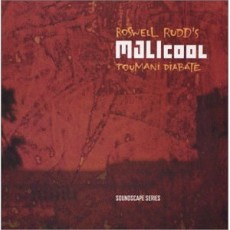
Daily Dose Of Jazz…
Roswell Rudd, born Roswell Hopkins Rudd, Jr. on November 17, 1935, grew up in Sharon, Connecticut. Graduating from Yale University where he had played and recorded two albums of boisterous trad-jazz with Eli’s Chosen Six, a Dixieland band of Yale students that Rudd joined in the mid-’50s. But his landmark collaborations with Cecil Taylor, Archie Shepp, John Tchicai and Steve Lacy grew out of the lessons learned while playing rags and stomps in college.
In the 1960s, Rudd participated in key free jazz recordings with his ultra avant-garde New York Art Quartet, the soundtrack of the 1964 film New York Eye and Ear Control, Michael Mantler & Carla Bley’s 1968 Jazz Composer’s Orchestra-Communications with Cecil Taylor; and has collaborations with Don Cherry, Pharoah Sanders, Larry Coryell and Gato Barbieri. A major factor in his career has been his lifelong friendships with saxophonists Archie Shepp and Steve Lacy, recording and performing the music of Thelonious Monk numerous times with the later.
Roswell is skilled in a variety of jazz genres but is best known for his avant-garde contributions. Rudd has taught ethnomusicology at Bard College and the University of Maine. Over a period of three decades he has assisted with world music song style – Cantometrics and Global Jukebox projects. He has collaborated and recorded with Malian, Mongolian and with Hispanic New Yorkers.
The Grammy Award-nominated jazz trombonist and composer Roswell Rudd conducts master classes and workshops around the world and since 1962 Rudd has worked extensively with saxophonist Archie Shepp.
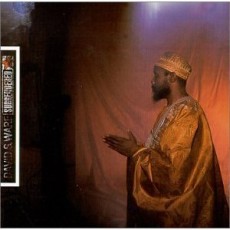
Daily Dose Of Jazz…
David S. Ware was born on November 7, 1949 in Plainfield, New Jersey and began playing at age ten due to his father’s admiration for the saxophone and his large record collection. While in high school he played in the bands and ventured into New York as a teenager to listen to jazz. He had informal practice sessions with Sonny Rollins as a youth in the ’60s; then as part of the fertile NYC Loft Jazz era of the ’70s.
During this decade, he joined the Cecil Taylor Unit and Andrew Cyrille’s Maono. He also worked together with drummers Beaver Harris and Milford Graves. In the early ’80s he toured Europe with both Andrew Cyrille and his own trio. In mid-decade, Ware purposefully engaged himself in a period of extensive woodshedding – in order to further develop both his personal sound and his visionary group concept.
The ’90s saw the full-on actualization of this group, and the recognition of David S. Ware as a true saxophone colossus. A series of groundbreaking albums by the David S. Ware Quartet were released on the Silkheart, DIW, Homestead, AUM Fidelity, and Columbia Jazz labels. Perhaps the most highly acclaimed group of the last decade, David’s efforts were rewarded by being one of the very few jazz musicians whose work was appreciated by an audience outside the narrow confines of the jazz world. In an unprecedented coup, the ‘Cryptology’ album garnered the lead review slot in Rolling Stone Magazine.
Over the course of his career, tenor saxophonist David Ware has recorded for Columbia, Black Saint, DIW, Silkheart, Homestead, AUM Fidelity and Thirsty Ear record labels. He has performed with a host of musicians and was responsible for bringing the young pianist Matthew Shipp to the attention of the jazz environment. David S. Ware, who has played the most prestigious clubs and festivals around the globe passed away on October 18, 2012 ar age 62 in New Brunswick, New Jersey.
More Posts: bandleader,composer,saxophone


